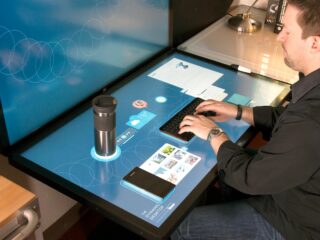Back in 2018, I was introduced to the Freestyle Libre 2 and 3 devices. At that time, I was exploring APIs and designing with applications like Origami and Protopie. Having access to open data and being able to design prototypes with data endpoints felt like a game changer.
Since I had just started experimenting with open APIs, my partner was seriously concerned about how food was affecting her body. Despite her efforts, she couldn’t find a solution. This included undergoing a procedure where a camera was inserted down her throat. She decided to try a different approach to better understand how food was impacting her internally. As always, I was curious to see how technology could help. What arrived in the mail was a box containing a small, standalone device and a sensor to be inserted into her arm. The aim was to provide her with more data to understand what was happening to her when she ate her daily meals.
Fast forward a couple of years, and I’ve always kept this experience in the back of my mind. I remember looking at the app and thinking that maybe someone should design a better app.
With my ongoing interest in wearables and smart devices beyond phones and tablets, and having worked in the consumer Internet of Things (IoT) and smart devices space over the past few years, as well as having a background in designing for AI and various interfaces, I wanted to learn more about the industry. Let’s face it: this section of my site is where I get to explore different technologies that pique my interest and understand how they work. So, let’s dive in.

When I was introduced to these kinds of devices, I was shown a bulky handheld device with a sensor that connects via Bluetooth and reads the data. The flash glucose monitoring system records glucose levels throughout the day and night. The FreeStyle Libre 2 system consists of the FreeStyle Libre 2 sensor and the FreeStyle LibreLink app. The system includes a small, water-resistant sensor that you wear just under the skin on your upper arm for up to 14 days. The sensor sends real-time glucose readings to your smartphone every minute and stores up to 8 hours of glucose readings in 15-minute intervals. It is designed to be water-resistant and can be worn for up to 14 days, even during activities like swimming, showering, and exercising.
After doing some background reading on how the device works, I decided to try it myself. There’s nothing better than firsthand experience when using a device or service, I thought. After using the device, I began to see how food was affecting my body. For many people, the effects of food can be hard to discern. Having internal data provided by the device was a significant step forward. I only wore the device for 2 months, as I felt it wasn’t essential to my daily life, but it had a lasting impact on me.
Fast forward a few years to the present, and I’ve seen these devices become more mainstream. Companies like Zoe are building on the work of the FreeStyle Libre 2 and 3, advancing the technology by transforming bulky standalone devices into apps that can be loaded on smartphones with NFC chips.
In the last couple of months, I’ve been reading extensively about these devices and how they work in detail, given my involvement in the wearable and smart devices sector. I’ve had to research various devices and their connection methods, including Wi-Fi, Bluetooth, Direct Wi-Fi, and various Google and Amazon protocols that facilitate device connectivity.
During my research, I came across many videos discussing how different companies are bringing these devices into the mainstream. At this point, my focus shifted to reviewing and learning about how companies like Zoe are utilizing these devices, as well as delving deeper into the technology behind them.
How does the Freestyle Libre sensor attach?
- A sensor pack (contains the actual glucose sensor that sticks to your skin)
- A sensor applicator (applies the sensor to your skin)
- An alcohol wipe – prepares the skin pre-application
The FreeStyle Libre system consists of two main components: the sensor and the reader. The sensor is a small, round device with a tiny, flexible wire inserted just under the skin to continuously measure glucose levels. The reader, a handheld device, scans the sensor to display real-time glucose readings, historical data, and trends.
Here’s the interesting part: the filament in the sensor contains an enzyme called glucose oxidase. This enzyme reacts with the interstitial fluid, converting glucose into hydrogen peroxide. A current is then generated by this reaction, which is electronically transmitted to your reader or smartphone app.
For a more detailed scientific understanding of how the sensor measures glucose, you can check out this [detailed article](insert article link) that explores the technology behind it.
It’s important to note that this measurement is based on interstitial fluid, not blood. While it serves as a proxy for blood glucose levels, it is accurate enough for my needs.



